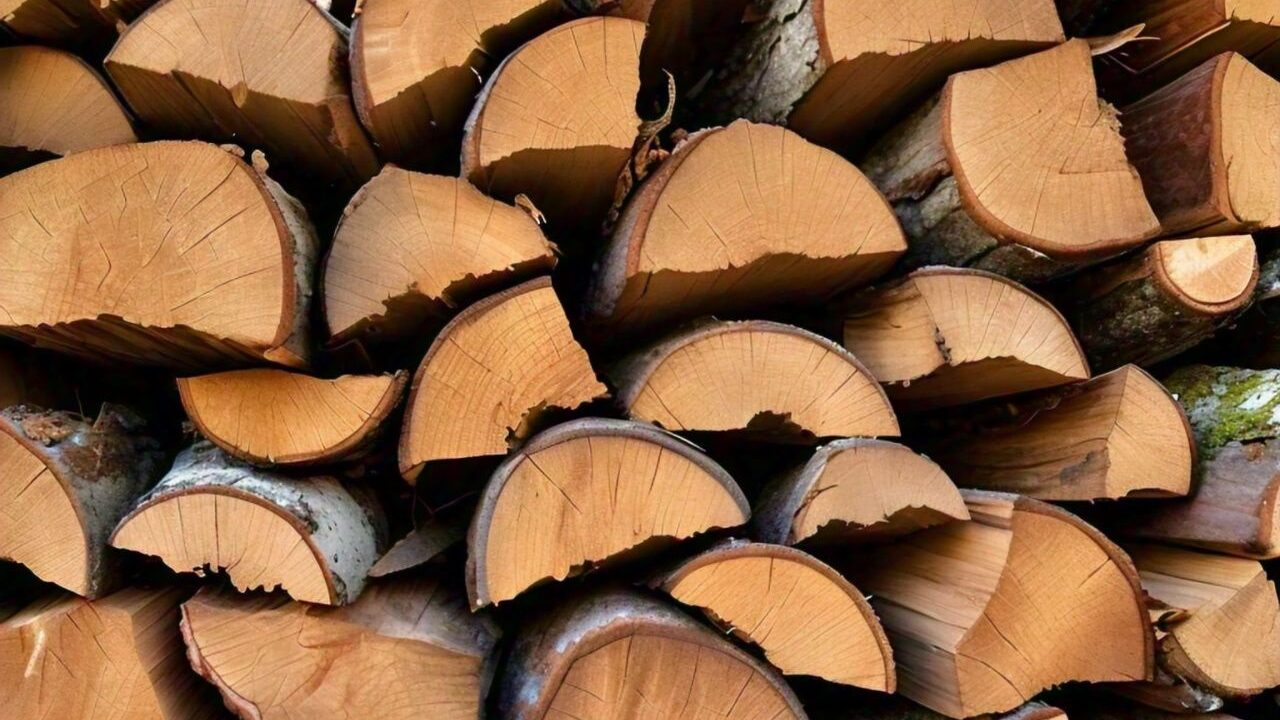
Stoking firewood to heat homes, or for use when on a camping trip, or for an outdoor fire pit, is common. It can be daunting to search for firewood of good quality but if you manage to find them near your residence, it has a major impact of your fire. Being informed on some of these facts: where to get good firewood and how is crucial. Here’s your comprehensive guide to sourcing local fire wood.
Types of Firewood
Different types of firewood exist from each of which possesses unique properties. The general knowledge on the kinds of wood aids one to choose on the appropriate wood.
Hardwood Firewood:
Such woods as oak, maple and hickory take longer to ignite and give out hotter flames. When used with indoor fireplaces and wood burning stoves, we compress hardwood logs to ensure a steady fire for longer periods.
Softwood Firewood:
Pine, cedar, and spruce catch fire easily but burn more quickly than other woods. They produce considerably less heat than the hardwoods in the same range of species. Softwoods are the best for kindling and appropriate where used in such places as camp sites.
Where to Find Firewood
A number of local fullers provide firewood of different purposes in the market. When looking for fire wood, one should look around to get the best fire wood without burning more cash on the transportation costs.
Local Suppliers:
Firewood can be purchased from landscaping companies or garden centers, or from stores that specialize only in fire wood. Such businesses offer mature and kiln-dried fire wood which are more suitable for burning and the least produce smoke. It is even possible to find suppliers that may also have delivery options as a part of your order’s package.
Grocery Stores and Gas Stations:
Especially in the winter, food shops and gasoline stations often sell firewood. This is true because while these bundles tend to be a little smaller than the standard packaging, it makes for easy purchases when you just want to make a quick purchase.
Farmers’ Markets:
At the farmers’ markets, vendors may bring firewood from nearby forests or sawmills, as there is no specific product in cans or freezers for sale. Here, people can help local businesses as well as purchase firewood.
Online Marketplaces:
Some primary sources of firewood include with websites such as craigslist or face book marketplace with fire wood for sale in various quantities. You should probably learn the quality and the density of the wood before placing the wood order.
Selecting Quality Firewood
Selecting the most appropriate firewood enhances the ideal burning and the process minimizes things like emission of excess smoke or pile up. Here’s what to consider:
Seasoned vs. Green Wood:
Well-seasoned firewood can take at least six months to a year and a half to dry up, and this is in a bid to get rid of moisture. It is a fact that wood of this type is slower burning and has fewer flames. Ear green wood has a moisture content that burns, therefore producing more smoke and less heat. But if possible try to get mature firewood whenever you are buying them.
Kiln-Dried Wood:
Seasoned or mature firewood is firewood that is put through a curing process in a climate controlled setting. The method breaks the water content in the biomass fast, which in turn leads to lower cinder rate. Indoor burning fire wood that produces heat is suitable, and kiln dried fire wood meets these expectations.
Wood Length and Size:
Firewood for most fire places and wood burning stoves are best when they are split to approximate lengths of 16-18 inches. You should also check the logs for their diameter; it sometimes may happen that a piece which is too small ignites faster.
Storing Firewood near me Properly
The issue of management of firewood is critical in determining the quality of the latter. Following these tips helps keep fire wood dry and ready for use:
Keep Off the Ground:
Firewood should be stacked off the ground on a platform or pallet or rack. This arrangement minimizes the chance of water soaking through.
Cover the Top:
It is prudent to use a tarp to help cover the top of the stack for the firewood. It also provides the airflow but at the same time protects the wood from rain or snow. Do not cover the sides because there must be proper airflow in the room.
Location:
It is important that firewood be stored at least twenty feet from structure fires. This minimizes the possibility of the attraction of pests. The last mentioned shed, with good ventilation, can be used for storage purposes.
Firewood Safety Tips
Burning firewood involves considerable risk and thus must be taken with caution. Adapting preventive measures prevents occurrence of accidents.
Check Local Regulations:
Some areas implement regulations on fire wood transportation, burning, and storage. Get acquainted with such rules considering the probability of penalties.
Avoid Treated Wood:
When burning materials, it is crucial to avoid those that have been treated with chemicals, such as pressure lumber. These chemicals emit harmful substances when burned.
Use Proper Tools:
Attached pictures like a poker, shovel, and gloves make the handling of firewood more safe. When burning wood, a strong fire shutter prevents stray sparks and embers from getting out of hand.
Alternative Sources for Free or Affordable Firewood
Those who want pecuniary or no-cost firewood can find several ways to keep outlay low here.
Tree Services and Arborists:
Tree service companies usually leave behind tree material that they should have trimmed or removed. Call some companies to ask if they give away free firewood for them to collect and use.
Construction Sites:
Forestry workers will produce timber that builders can use in construction or renovation processes, and they can burn the leftover. Additionally, they should check whether anyone has ever chemically treated the wood before they use it in a fireplace.
Local Parks and Forests:
Some parks or forests permit visitors to pick up the drop wood for those who arrive with fire woods in low supply. It is important to confirm any regulation or permit that one needs to obtain before embarking on collecting wood in public places.
Community Woodlots:
Some local authorities have regulatory rights of group stands where people can get fuel wood. Such areas may operate at certain times, or are able to distribute a certain amount only.
Firewood Alternatives
Nonetheless, there is an option for the provision of different forms of fire woods for each case.
Wood Pellets:
Wood pellets are also environmentally friendly because manufacturers make them from compressed sawdust. They burn well in the pellet stoves, and the stoves also take least space for storage.
Eco Logs:
Recyclers harvest sawn timber or logs from by-products of other manufactures, offering a good substitute for firewood. They are less likely to produce smoke and they have a steady burn.
Compressed Wood Bricks:
Compressed wood bricks refer to sawdust and small wooden chips pressed together. They last longer than the ordinary firewood and they are comparatively drier.
Conclusion
Buying fire wood locally can be convenient, cheap and diverse. Selection of right type of firewood, place to purchase it and how to store it results in better fire woods burning experience. Regardless of selecting the hardwood that burns steady and hot for many hours or the softwood that ignites quickly and burns short – selecting good fire woods does matter. Other light research for free options or an alternative might also be a good source of finding other methods of heating and leisure.









One reply on “Finding Firewood near me: A Comprehensive Guide”
Good